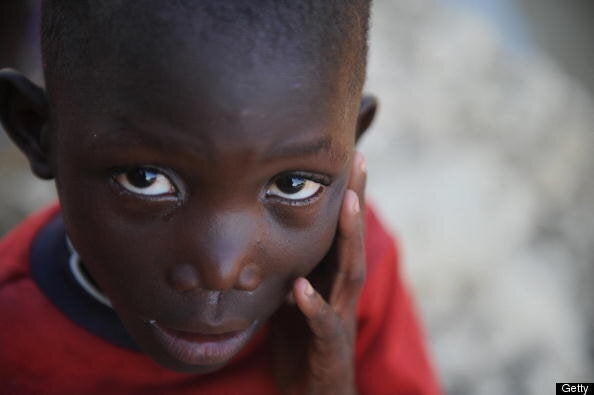
At the end of August, BRAC's founder F. H. Abed, the head of BRAC International, Aminul Alam and I visited Haiti to explore ways we could deepen our work there.
Only 680 miles off the Florida coast, Haiti is considered the poorest country in the Western Hemisphere with approximately 80% of its 9 million people living under the poverty line and 54% in abject poverty. Saddled with multiple development challenges including political instability, high unemployment and illiteracy rates, food insecurity and vulnerability to devastating natural disasters, Haiti is a beautiful country with a vibrant population. In spite of these challenges, the people we met and programs we visited left us feeling very hopeful for the country's future.
We were hosted by our partner, Fonkoze, the country's largest microfinance institution, which runs an economic development program for the ultra poor, Chemen Lavi Miyo (CLM). Over the last few years Fonkoze has piloted the CLM program with technical support from BRAC, and the organization is now preparing to scale the program to include up to 5,000 participants.
In 2002, BRAC initiated its innovative ultra poor program which is designed to meet the needs of extremely vulnerable and food insecure women who are unable to access and benefit from mainstream poverty reduction programs in Bangladesh.
The program improves the livelihoods of participants through free assets, enterprise training, special health services, social development, subsistence allowances, and specialized microfinance loans. Today it covers the poorest districts in Bangladesh and has benefited over 150,000 women.
Given the program's success and impact, BRAC is now providing technical assistance for similar projects in Ethiopia, Honduras, India, Pakistan, Peru, Yemen and of course Haiti.
In Haiti I set out to meet with new members of the CLM program, to hear their stories and also witness the successes and challenges of the pilot program. Natalie is 18 years old. She has 7 brothers and sisters, but she is an orphan. Her mother died in child birth 7 years earlier and her father died two years ago when she was 16. I asked her where she was living and how she earned money for food. With a desperate look on her face, she explained that she now depended on her boyfriend who she had been living with for the last two years. After her father died, she needed to find a way to feed herself. Now she has a baby and tries to do whatever she can to earn income. She's never been to school a day in her life but would love to learn. Natalie said that she was eager to participate in the CLM program.
We met another very thin woman whose name I will keep confidential. She is a mother of four but has only three at home now. She gave up her oldest daughter as she couldn't afford to feed her. In Haiti, this means her child is working in someone else's home, often under slave-like conditions. (There is a book about the estimated 300,000 child slaves in Haiti called Restaveks by Jean-Robert Cadet, a Haitian American and former restavek, who explains this phenomena and promotes a campaign to end the practice.)
This woman has resorted to prostitution to support her family (a Creole term that means 'staying with'). I noticed a burn on her youngest child's forehead that looked like it was becoming infected. She explained that she didn't have the means to see a doctor. It was troubling to think the burn required only a simple treatment, but without it had the potential to become a significant health issue. She was also eager to join the CLM program.
At a focus group meeting for potential new CLM participants, I met four more women and their families. Each of these women had between five and 10 kids and most were only eating seven to nine meals a week. In fact, Melanne, the 12-year-old daughter of one of the women, had not eaten all day and it was already late afternoon.
I met with two other children: a daughter who was already pregnant and a son who was working as a day laborer -- the only job he could obtain without a proper education. I asked them both what they wanted to be when they grew up, but unlike BRAC school kids in other countries who were quick to talk about becoming teachers and doctors, they both seemed uninspired by the question, as they had little focus on their futures.
As difficult as these encounters were, I know that the CLM program offers a bright side. After living in Bangladesh for over 4 years and now working with BRAC, I have witnessed firsthand the impact of its ultra poor program on the most vulnerable women and households.
Before entering the program, the targeted women have often been abandoned by their husbands and even children. They have been isolated and ignored within their communities and each day is merely a struggle for survival. A sense of self-worth or optimism for a better future has completely disappeared. However, the program's highly targeted training and support more often than not produces a drastic change.
These same women, who one or two years earlier were too shy to look me in the eyes when introducing themselves, are transformed into confident, self-sufficient and even ambitious persons that have earned the attention and respect of their communities. After two years of support -- asset transfers, skill training and social linkages -- over 90% "graduate" into becoming successful microfinance members. Together, Fonkoze and BRAC are blazing a new pathway out of poverty.
Last week, BRAC, Fonkoze and others made a commitment at the Clinton Global Initiative to break the cycle of poverty in Haiti. Click here to see the announcement and click here to read the full press release.